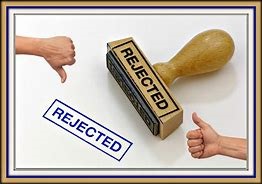Right to Repair
We all know the three Rs when it comes to waste management. Reducing, reusing and recycling, in that order, helps lessen the amount of waste that ends up in landfills and oceans, thus reducing our impact on the environment. These actions help preserve natural resources, reduce the damage on marine ecosystems and help combat climate change (landfills are a major source of methane emissions). But there’s another “R” that has often been overlooked and not discussed nearly enough, and that’s the right to repair. So I thought I’d write a post about what is it and why it matters, especially if you’re concerned about climate change and the environment.
What is the problem?
I’ll start with a short anecdotal story about my latest grievance with Big Tech. I got myself a pair of Bluetooth earphones (Apple Air Pods) about three years back and I’ve grown very fond of it for its design, decent sound quality, ease of use and convenience. But early this year, one of the sticks (or buds) started disconnecting after about ten minutes of use, so I decided to do a little troubleshooting and realised that the problem was most likely caused by a defective battery. I was relieved that it wasn’t a more complicated issue and naively assumed the process of getting it fixed would be fairly straightforward and cheap.
Oh, how wrong I was! When I looked into it, I realised it’s going to cost me a couple of hundred Ringgit just to replace a tiny battery (at an authorised Apple service provider) on a product that was otherwise working fine. It didn’t make sense for me to spend a few hundred Ringgit to replace the battery when a new pair is currently retailing for about RM700. Why is it so difficult for us to fix something we own without paying a premium on the repair, and at a huge fraction of the original cost? And therein lies the problem.
While products are becoming increasingly complex and sophisticated, manufacturers are utilizing various tactics to reduce the reparability of these products, either intentionally or not, such as using propriety screws or refusing to publish repair manuals, according to The New York Times. Oftentimes, this enables manufacturers to either sell new replacements instead of repairing products with otherwise relatively simple issues, which helps pad their bottom line.
What is the “right to repair”?
Right to repair essentially means that consumers have the right (through legislation) to repair products that they own, either by themselves or a technician of their choice. It will make repairs much easier and more accessible by forcing manufacturers to make parts, tools and manuals available to third parties.
Many companies are unsurprisingly however against this, citing fears of intellectual property violations and safety concerns, and are trying to push back. Apple, for example, advised lawmakers in California to block right to repair legislation, claiming consumers could hurt themselves in the process of repairing their devices. They also lobbied against these laws in New York. Microsoft, Google, Verizon, Toyota, Caterpillar are among other companies that have consistently lobbied against the right to repair, along with many other home appliance firms and medical companies. Despite these efforts, however, the movement is now gaining momentum across many states in the US and countries in Europe.
Why is it important?
The importance of the right to repair comes down to two main issues: economics and the environment. Firstly, right to repair legislation will reduce the cost of repairs (or replacements) as consumers can either perform these repairs themselves or through a cheaper third-party alternative, instead of solely relying on official channels which often charge a significant premium.
More importantly, however, right to repair laws will be a crucial factor in reducing e-waste. According to the UN’s Global E-waste Monitor 2020, 53.6 million metric tonnes of e-waste was produced globally in 2019, (of which only 17.4 per cent was recycled) and that figure is set to rise to 74 million metric tonnes by 2030, making e-waste the fastest growing domestic waste stream in the world. This is attributed to higher consumption rates, shorter life cycles and fewer options to repair. E-waste is often very toxic, releasing heavy metals and other dangerous chemicals into the soil at landfills. The growing amount of e-waste produced also affects the health of millions of children, a World Health Organisation report warns. Right to repair laws, therefore, are crucial in allowing consumers to make repairs and increase the lifespan of the products they own, therefore reducing the amount of waste generated and its impact on the environment. Without the right to repair, it’s difficult for consumers to reduce their consumption, especially in instances where a simple fix is all it takes.
What now?
Despite the resistance and lobbying from Big Tech and other manufacturers, US President Joe Biden has signed an executive order last month encouraging the US Federal Trade Commission (FTC) to limit the ability of manufacturers to restrict independent repairs of their products. The FTC in turn, led by its new chair Lina Khan, has also voted unanimously to step up enforcement against repair restrictions and restoring the right to repair.
I hope these types of regulations, coupled with the momentum behind the right to repair movement, would encourage more developing countries like Malaysia to enforce stricter measures, and put an end to the greed of companies (despite their greenwashing efforts) trying to increase their profits at the expense of consumers and the environment.
In the meantime, here’s a link to a YouTube video of Apple co-founder Steve Wozniak talking about right to repair – https://youtu.be/CN1djPMooVY

Arvinth Gunasegaran | MSc International Business, Nottingham University (UK)








